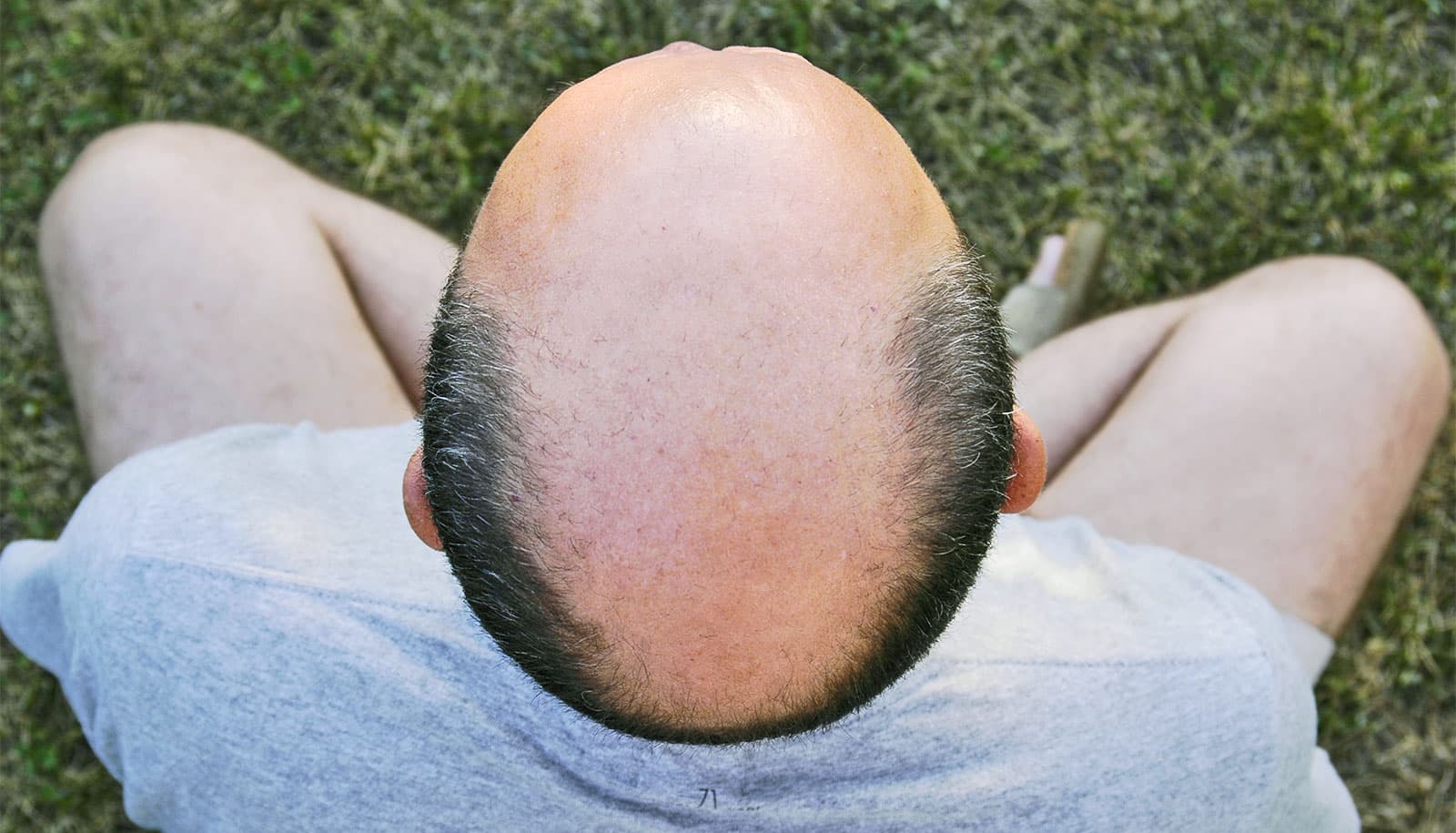The discovery of a molecular mechanism for stimulating hair growth may offer a road map for a new generation of therapies for androgenetic alopecia, a common form of hair loss in both women and men.
The researchers have identified the process by which aged, or senescent, pigment-making cells in the skin cause significant growth of hair inside skin moles, called nevi.
The study, published in the journal Nature, describes the essential role that the osteopontin and CD44 molecules play in activating hair growth inside hairy skin nevi. These skin nevi accumulate particularly large numbers of senescent pigment cells and yet display very robust hair growth.
“We found that senescent pigment cells produce large quantities of a specific signaling molecule called osteopontin, which causes normally dormant and diminutive hair follicles to activate their stem cells for robust growth of long and thick hairs,” says lead corresponding author Maksim Plikus, a professor of developmental and cell biology at the University of California, Irvine and lead corresponding author of the study published in Nature.
“Senescent cells are typically viewed as detrimental to regeneration and are thought to drive the aging process as they accumulate in tissues throughout the body, but our research clearly shows that cellular senescence has a positive side to it.”
The growth of hair follicles is well regulated by stem cell activation; these cells divide, enabling follicles to produce new hair in a cyclical manner. After each bout of hair growth, there’s a period of dormancy, during which the follicle’s stem cells remain inactive until the next cycle begins.
The study involved mouse models with pigmented skin spots that had hyperactivated hair stem cells and displayed accelerated hair growth, strongly resembling the clinical observations documented in human hairy skin nevi.
Further detailed analysis of senescent pigment cells and the nearby hair stem cells revealed that the former produced high levels of a signaling molecule called osteopontin, for which hair stem cells had a matching receptor molecule called CD44. Upon molecular interaction between osteopontin and CD44, hair stem cells became activated, resulting in robust hair growth.
To confirm the leading role of osteopontin and CD44 in the process, the researchers studied mouse models lacking either one of these genes; they exhibited significantly slower hair growth. The effect of osteopontin on hair growth has also been confirmed via hairy skin nevi samples collected from humans.
“Our findings provide qualitatively new insights into the relationship between senescent cells and tissue’s own stem cells and reveal positive effects of senescent cells on hair follicle stem cells,” says first and co-corresponding author Xiaojie Wang, an associate specialist in developmental and cell biology.
“As we learn more, that information can potentially be harnessed to develop new therapies that target properties of senescent cells and treat a wide range of regenerative disorders, including common hair loss.”
“In addition to osteopontin and CD44, we’re looking deeper into other molecules present in hairy skin nevi and their ability to induce hair growth. It’s likely that our continued research will identify additional potent activators,” Plikus says.
The work was supported in part by the LEO Foundation, the Chan Zuckerberg Initiative, the WM Keck Foundation, the National Science Foundation, and the National Institutes of Health. Additional backing came from Simons Foundation and the California Institute for Regenerative Medicine Shared Research Laboratory.
Source: UC Irvine

